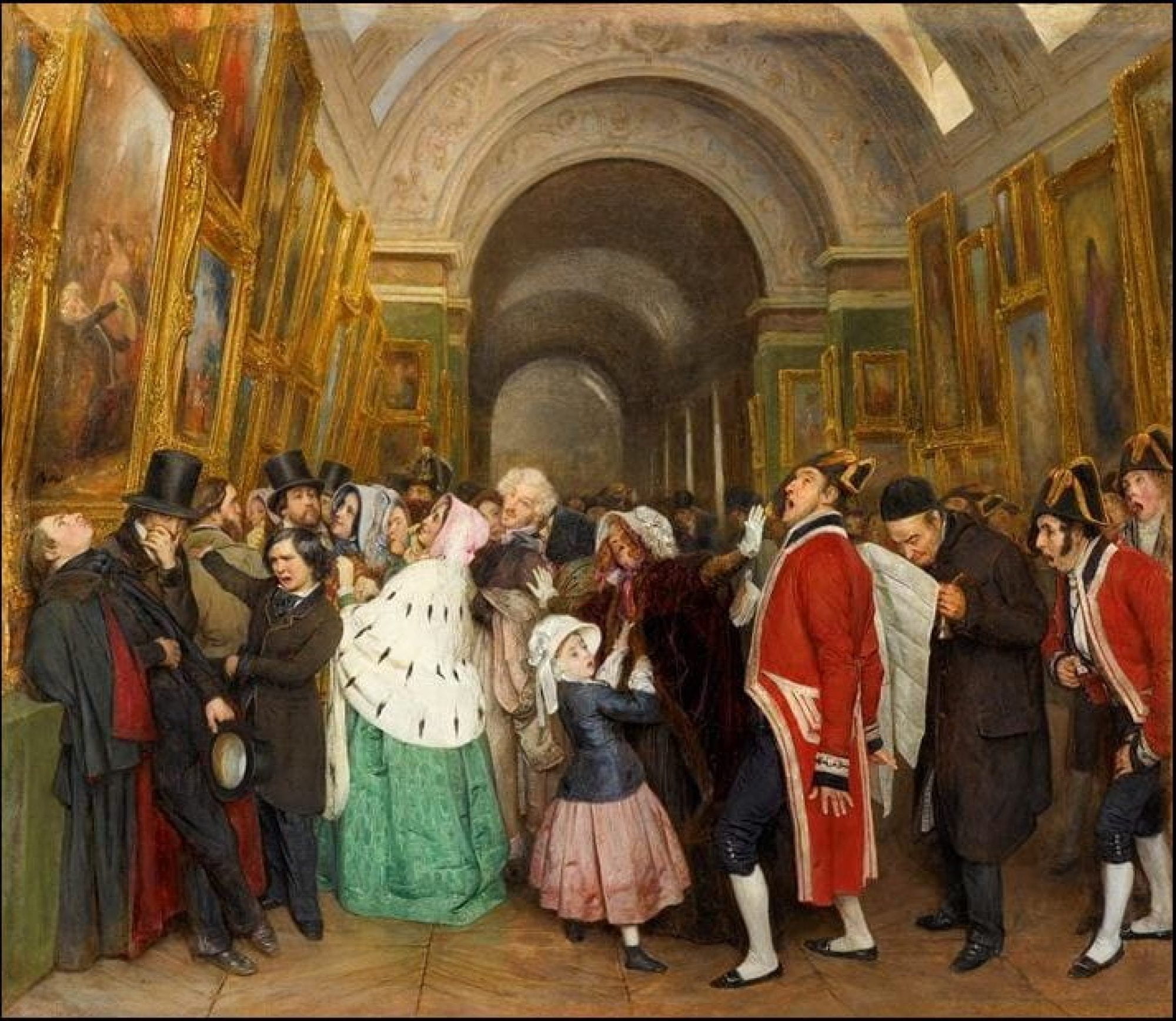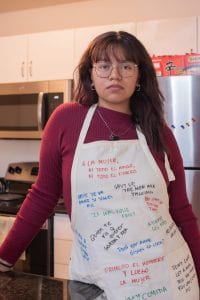Photography, Culture, and The Abstraction of the Body: Interview with Monika Garcia
Jasmine Plasencio
April 28, 2023
Jasmine Plasencio: Today I am joined by artist Monika Garcia. Hello Monika, please tell me about yourself.
Monika Garcia: Hello, my name is Monika Garcia. I’m a photography major. I go to Texas State and I’m currently in my thesis one so I’m almost done with the program and almost graduating hopefully in a year.
Plasencio: That’s great. So what made you want to be an artist and how old were you when you first started making art?
Garcia: I probably want to say my brothers really helped me out with that. Since I was young they would always like draw. and my older brother would draw and then my other brother, who’s also older than me, would do the writing and they would collaborate together even though they were young and they probably didn’t know what they were doing. I am 6 to 8 years younger than them so I’d always like to look at them and see what they were doing.This was the time where I started drawing myself. However, after a while I felt that drawing wasn’t it for me. Then I went to band for about 6 years and then other than that I’ve had no art classes or anything before I got here. So, at University level is where I want to say my art really grew more than it was. Before that it was just me nibbling into what art is, but when I got here it blew up and I got more artsy I guess.
Plasencio: It is the people you surround yourself with that influenced you?
Garcia: Yeah, when I got here it was during Covid so everything was on zoom, but learning was still interesting to me. Even the core classes I found cool and interesting. I was already a photo major because that’s what interested me. But I had never had my own camera before. I would just use my phone and my creative mindset.
Plasencio: Being from a Border Town how would you identify and do you express your identity in your artwork?
Garcia: Yes, definitely. That also answers the previous question about my culture. I am Mexican/Hispanic. I was born originally in Virginia but we moved to Eagle Pass which is a border town. I guess my experiences through that influenced who I am. Everyone there is Hispanic- there’s not a single person there that doesn’t know Spanish. So that was like everyone there is a part of my community and similar to me. Then when I came here to Texas State there were so many different cultures. So missing that part of me and my community can be seen in all of my works. In my thesis work I’m going over my culture and gender norms in my culture. This way I display the good and the bad of my culture. For example the men are usually seen doing labor work while the women are usually seen doing dishes. There’s a lot of archival images of this that I use and that portray that, but also I’m trying to show that they are more than gender norms. I want to show that people could do the opposite; for example women can play into labor work and men can do housework. But I’m also showing the beauty of my culture and my identity. I am trying not to bash on my culture because I also embrace it. I was in Mariachi for 6 years too.
Plasencio: You take Quinceañera photos, could you talk about your interest in that?
Garcia: I took my boyfriend’s sister’s quinceañera photos. I have been around quinceañeras my whole life, I had a quinceañera- Quinceañeras are the main party in Eagle Pass. That’s what people do for fun like “oh yeah let’s go to quinceañera this weekend” and we’re like “yeah okay!”. I wanted to use my culture and my identity in my work that’s very important to me. I also show in my thesis work how my own expressions and all my own thoughts relate to my culture and I’m trying to portray it to someone who’s not part of it or doesn’t experience those things. I think that identity and cultures mainly portrayed a lot more in my thesis work than in my other work, but in some way in my other work you can see some hints of it.
Plasencio: So, where do you want your art to take you both in your career and personally. Do you want to make a career out of photography?
Garcia: Yes, I do. I eventually want to go for my masters, but that’s the whole process. But I do want to go through that eventually. I want to become a professor of photography eventually, but I do want to go through the experience of having exhibitions that a normal artist has. So I do want to get further into the art world.
Plasencio: What is your creative process when you’re making art?
Garcia: I don’t know it’s very different, it varies. Usually I have to get into that mindset of shooting photos because beforehand it feels like a lot of work. But when I am in the mindset I have to pick up my camera and walk around for times where I don’t have a specific set in stone thing I want to do. However, if it’s a series I want to do then usually I just set up and then start shooting because I already know what I’m doing. But for my thesis where it’s very open-ended and I could shoot whatever makes sense- that’s when I go around my town and around my family. I just carry my camera with me and then I just go “okay this was right this feels like what I want in this series” and then I go shoot.
Plasencio: So, it’s a feeling that goes into how you know when to capture a photo?
Garcia: Yeah it’s always been a feeling for me too, for instance, if I am viewing something specific that looks good I have always shot it. My mom would tell me that I’ve always had an eye for what to photograph. I think that is also why I chose photography as a major. So I think it’s just knowing the right moment deep inside you. It is hard to explain.
Plasencio: I understand completely. So, after you take the photograph what is your process in regards to editing and developing, and how do you know when that is finished?
Garcia: For digital after I take the photo and then I edit it in photoshop and the lightroom just to touch up the white balance, the exposure, and more. I just simply check if it is exposed correctly. If it’s film, I either process and develop it myself in the dark room and then scan or I get my film and I scan it and then I do that whole process the same as digitally with the film but it’s already scanned film. So it depends on what I’m using but I usually end up going with film or not film using Photoshop and Lightroom. And then printing them big because I really like printing my photographs really big. My biggest work is 24 x 32 inches.
Plasencio: Why do you choose large scale?
Garcia: I think it was sort of like an addiction. I know I played with a big scale in my Advanced Digital class. That was my first time using a roll of paper, and I thought “this is really bad because I love doing this now”. And now I have to buy my own rolls of paper and they’re really expensive, but it’s so worth it. In my opinion 8.5 x 11inches doesn’t do it for me. It doesn’t give the same emotion versus larger works get right in your face and make you look at them. I just love big prints and how they look.
Plasencio: Yes, I agree completely. Let’s move on to the two series I want to talk to you about. Abstractions of the Body and Data Bending. I was just curious on what inspired you to create Abstractions of the Body? I really enjoyed that series and would love to hear from you about it.
Garcia: Yeah thank you. I know that was a large format film so it’s with those big cameras with the capes- like the old fashioned cameras and are really huge. Thankfully that’s a course in the program which is super cool. I know the assignment idea was to capture everyday moments or everyday life objects and I wanted to do something different because I knew everyone was going to do actual physical objects. So I wanted to focus more on what was not seen frequently or acknowledge of the body. So that was like my thought process to that. I also really like working with abstractions so I thought it would be cool to play around with abstracting the body. But it was difficult because it is a large format camera you have to have the subject to be very still. For example with digital photography it’s quick and it’s okay if there’s movement because you can change the shutter speed. But since the lighting in my house wasn’t the best the shutter speed had to be really slow to about a second or two, but within a second or two there could be even a shiver or a shake. So it was a slow process of that plus the abstraction came together in a way. So that was my whole process- focusing on abstraction and the body. It’s super fun to play around with that and make it seem like it’s not a body but still is.
Plasencio: How do people typically respond to your artwork? Are their responses mixed or consistent?
Garcia: They’re pretty consistent. I think it also varies with the people that see my work. Because I’m mostly around artists and people that have been surrounded with my work for years and they’ve seen me grow. So they’re a little biased. But I haven’t really had the experience of someone coming up that’s outside my photography community and expressing how they feel. But I’m really open to seeing if people do enjoy my work.
Plasencio: So wrapping up is there anyone you would like to thank for where you are today?
Garcia: My parents definitely because they helped me grow up into the person I am today. They always support me. I would say my boyfriend also because he’s always supportive with my anxiety. If I don’t do something right he’s always reassuring me “you got this” so he really plays a big part in supporting me. And also my photography peers have played a big part in how I grew. I feel like they really tell you the truth and give respectful critiques.
Plasencio: Wonderful, it was great to talk to you thank you for doing this interview with me.
Garcia: Thank you. This was fun.
See Monika Garcia’s Website:
https://monikagarcia.cargo.site/
See Monika Garcia’s Instagram:

